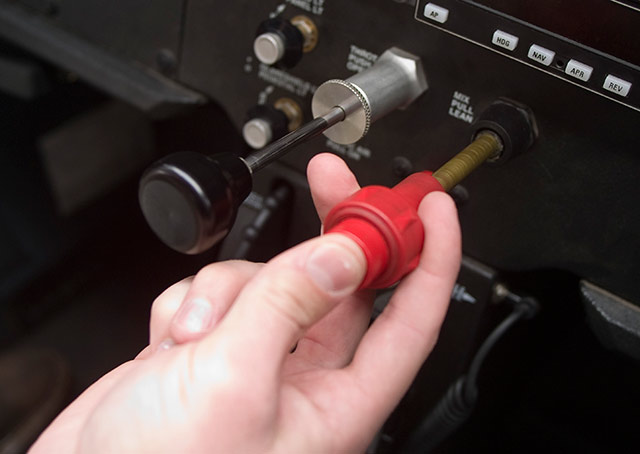
A student pilot and instructor arrive at the practice area after a short cruise-climb from the home airport. The plan is to start above 3,000 feet agl with slow flight and stall recoveries, then descend to altitudes prescribed in the practical test standards for ground reference maneuvers.
Clearing turns have been completed. The student is about to demonstrate a power-off stall entry when the instructor asks, “Should we adjust the mixture first?”
How would you respond to that query for the trainer you fly?
If you find yourself momentarily at a loss, it highlights the lean emphasis this important subject often receives. It is not uncommon to observe experienced pilots who regard leaning the fuel-air mixture as mainly a subject of academic interest. Many can discuss the subject adequately—but once in the aircraft, they place the mixture control in one of only two positions: full rich for startup and idle cutoff for shutdown. Even pilots who lean the mixture for extended cruise flight may snub the mixture control on a local flight. But a closer examination of manufacturer’s recommendations can expose that idea as inefficient management of the fuel supply.
The pilot’s operating handbook for the ubiquitous Cessna 152 contains a section titled, “Fuel savings procedures for flight training operations.” It discusses engine operation based on percentage of power being used, and provides a power range (and associated range of rpm settings) to use “while transitioning to and from the practice area,” along with a leaning technique.
Note that this POH, for a 1980 aircraft, urges leaning for maximum rpm “during all operations at any altitude, including those below 3,000 feet, when using 75 percent or less power.” (Pilots who don’t bother to lean at lower altitudes often explain that it is “unnecessary” to do so below 3,000 feet.)
What about practicing stalls and other maneuvers? For this aircraft, leaning the mixture “for maximum rpm during climbs above 3,000 feet” is recommended—and “the mixture may be left leaned for practicing such maneuvers as stalls.”
Following recommended procedures for the Cessna 152 can result in fuel savings of up to 13 percent. Stated differently, that says that pilots who follow a recommended maximum-operation leaning technique for all phases fly with 13 percent more margin against fuel exhaustion than those who don’t.



